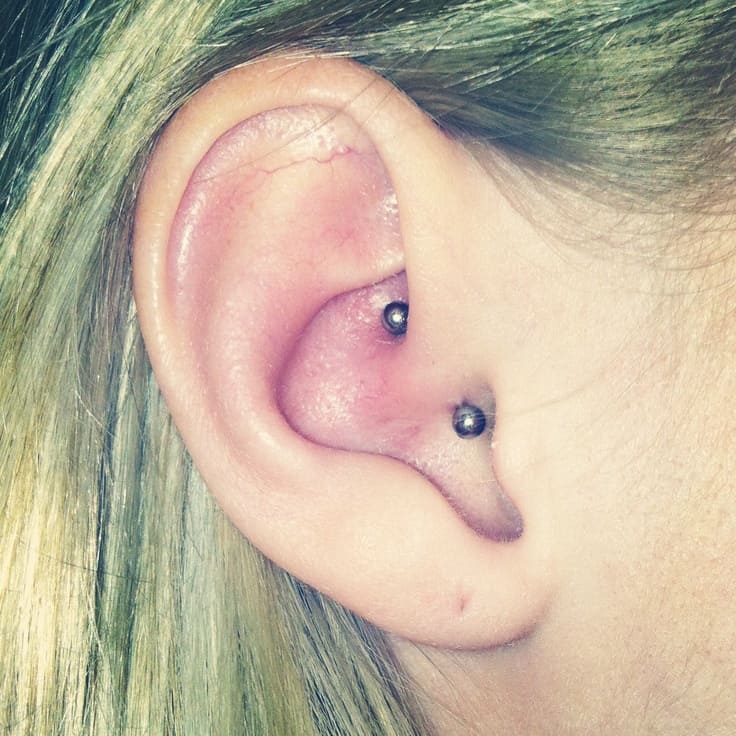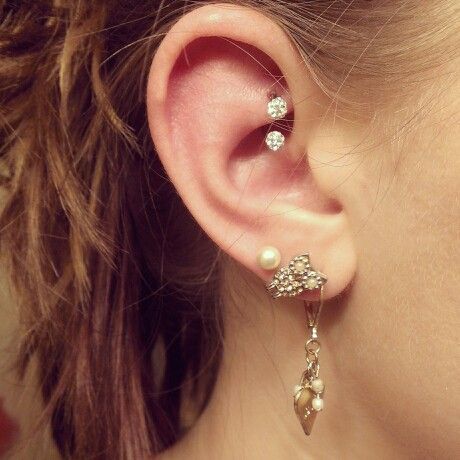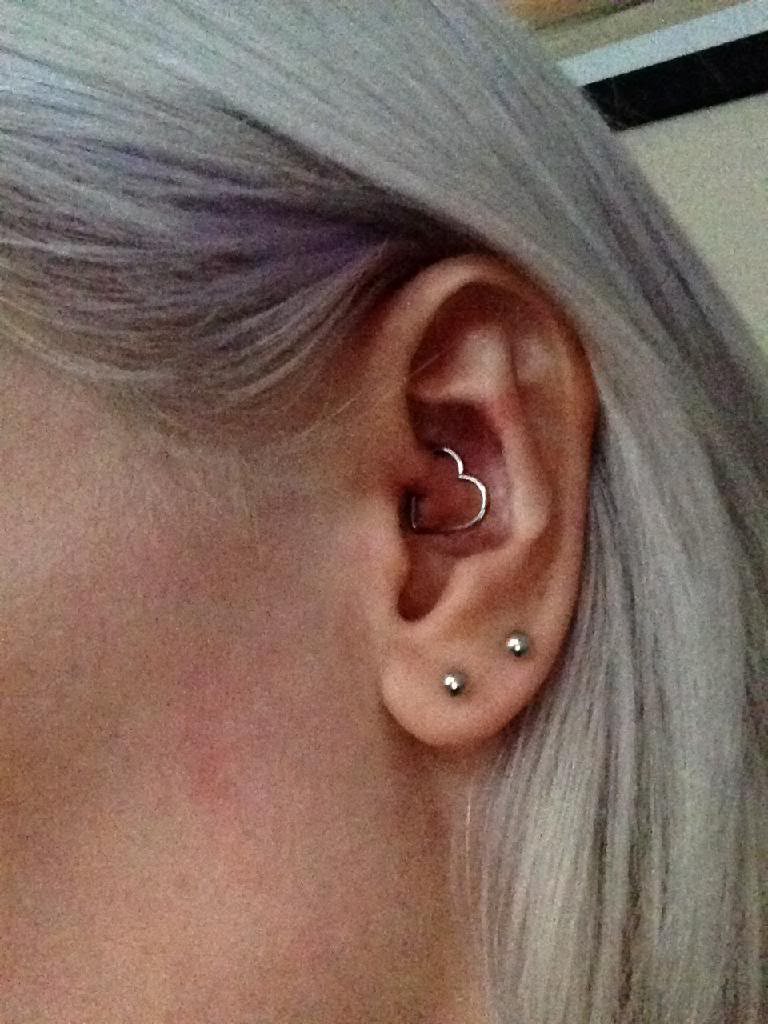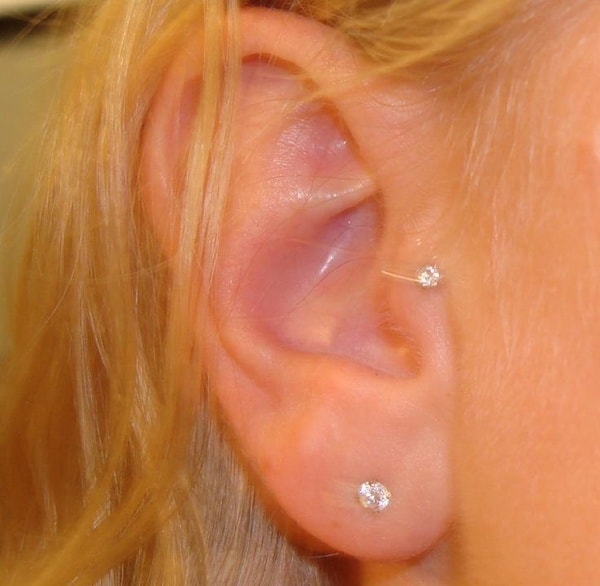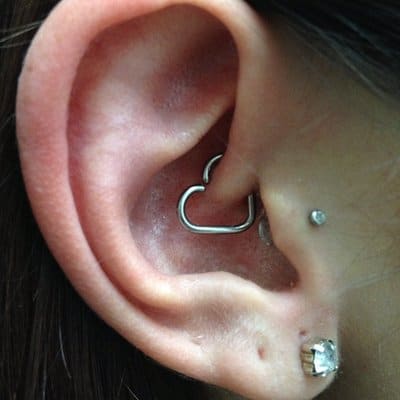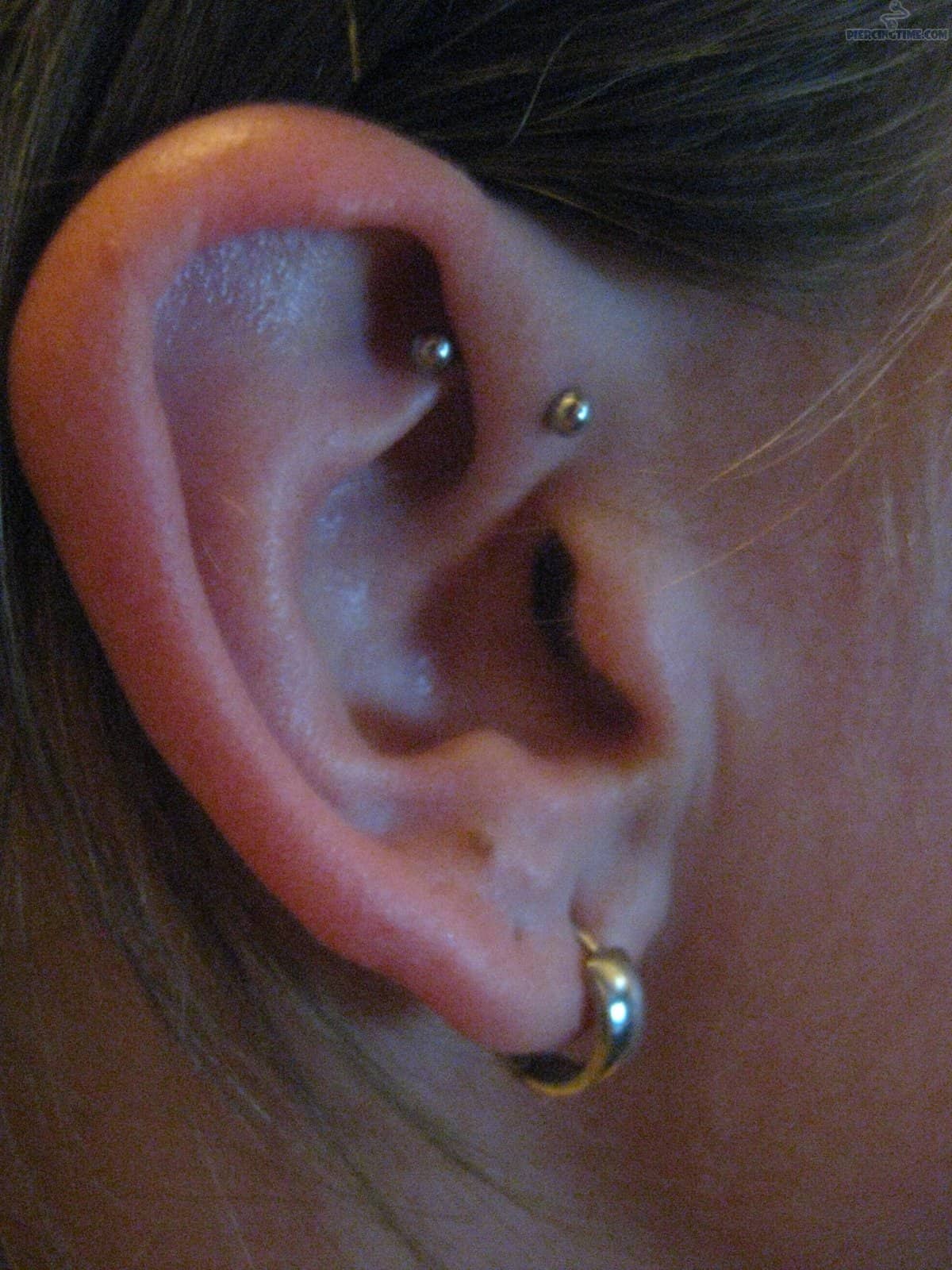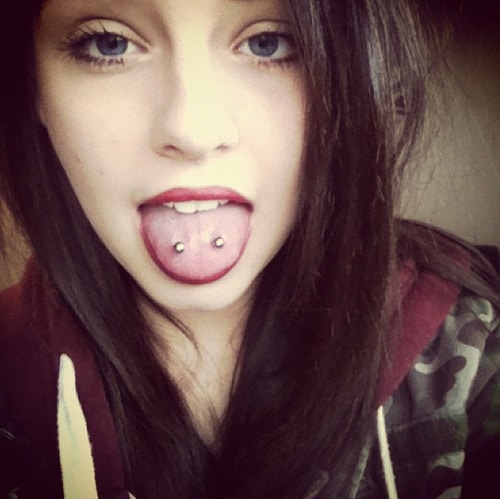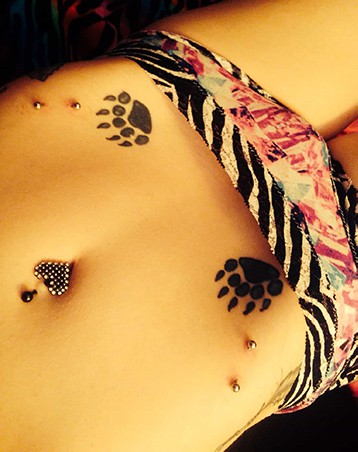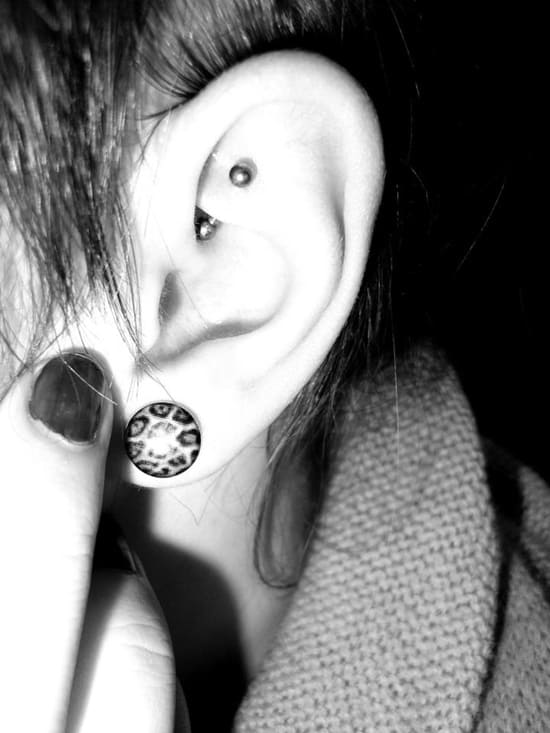Daith piercings have been around for over two decades, and they’ve remained consistently popular over time.
Whether you’re interested in a daith piercing for its aesthetic appeal or alleged medicinal properties, you’re in the right place!
Below, you’ll find everything you need to know, including the cost of a daith piercing, the procedure, healing time and aftercare tips, jewelry ideas, and much more.
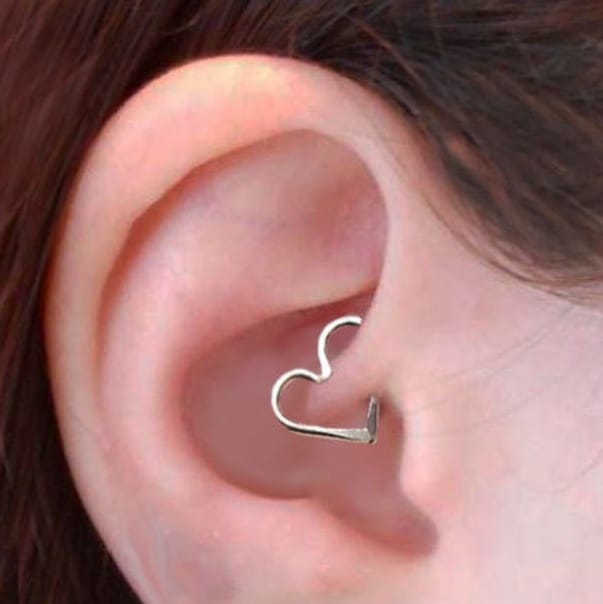
What is a daith piercing?
A daith (pronounced ‘doth’) is a piercing of the innermost cartilage fold of the ear, just above the ear canal.
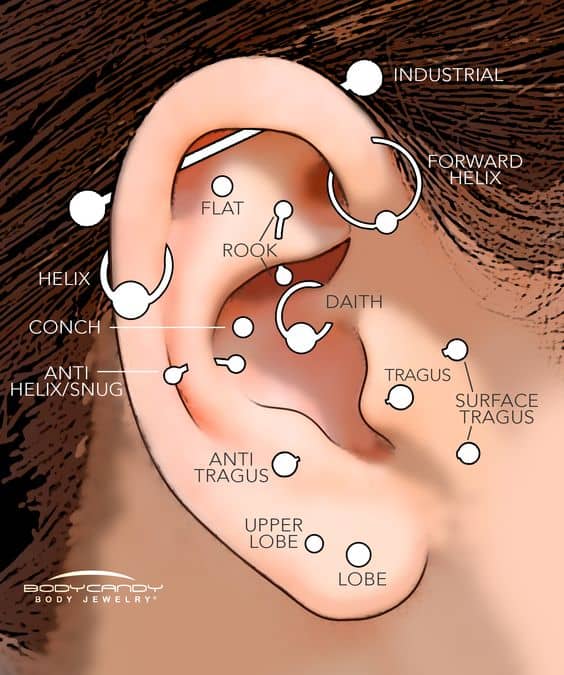
The first piercing od this type was performed by Erik Dakota in 1992, and was brought to public attention by Body Play magazine.
The magazine featured Dakota’s newly invented piercing site alongside the industrial piercing.
The name of the piercing is said to have been invented by one of Dakota’s clients. She suggested the word da’at, which in Hebrew means knowledge – to honor the cleverness of the piercer who came up with such an ingenious piercing.
Technically, a ‘true’ daith should look as if the bottom part of the jewelry looks as if it’s coming directly out of the ear canal.
The exact placement and whether this effect can be achieved depends on a person’s ear structure, though, as we all have slightly different ears.
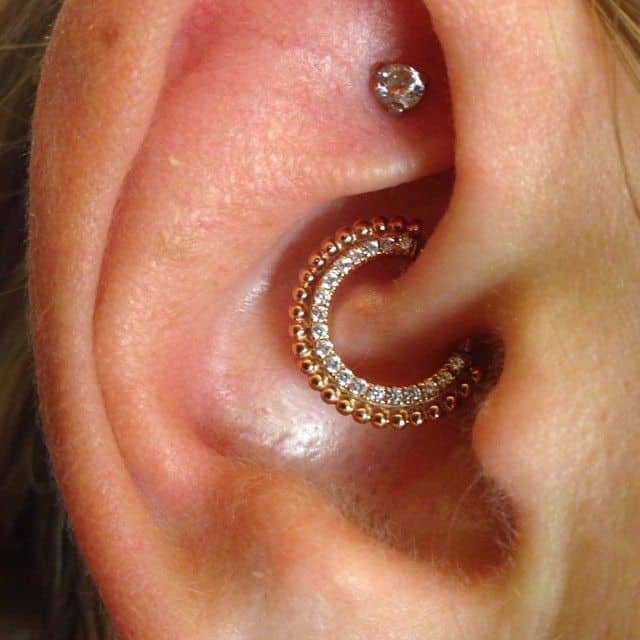
Jewelry
Typically, captive bead rings are used for daith piercings. This type of jewelry consists of an open metal ring – most often surgical steel or titanium – with a small bead used to close the circle.
It’s not screwed on in any way – the bead is held in place through pressure from the ends of the metal ring.
There is a huge variety of captive bead rings available to use in daith piercings. Usually, the bead is the main customizable part.
It can involve different decorative elements, such as hearts or arrows. It also doesn’t have to be made of metal – there are glass, ceramic, acrylic, and gemstone varieties, among others.
Recommended Reading: Don’t miss our guide to monroe piercings next.
Keep in mind that for the initial piece of jewelry, the piercer may recommend the simplest option.
The piercing site will have to be kept clean and neat during the healing process, and more complex, decorative jewelry can make cleaning more difficult or can snag more easily, potentially causing infection or tissue damage.
Once your piercing is all healed though, you’re good to choose whatever suits your fancy! As well as circular rings, heart-shaped and moon-shaped jewelry pieces are highly popular.
And while you’re shopping for daith jewelry, keep in mind that most septum jewelry will fit in this type of piercing.
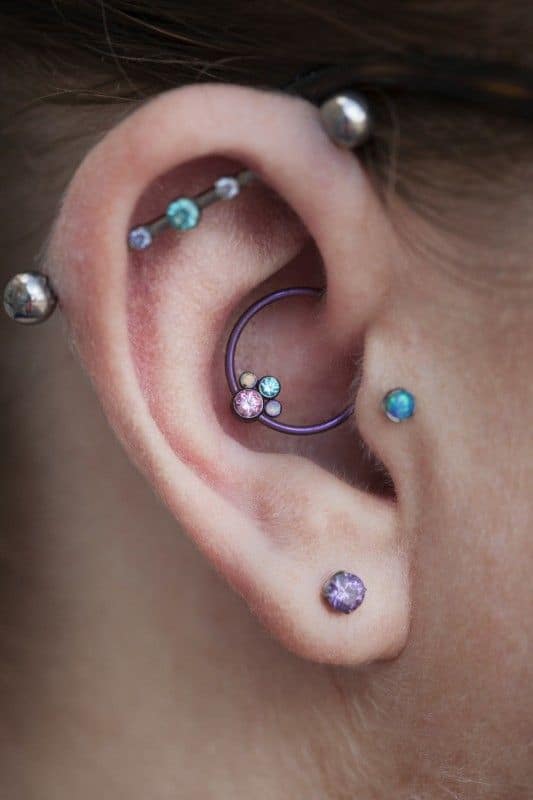
Daith piercing procedure
These piercings can be quite tricky to get right. It goes in an awkward position and there’s very little space for the piercer to work with.
Despite this increase in complexity, the process is largely the same as with any other piercing.
The piercer should start with thoroughly disinfecting the piercing site. This is incredibly important, and if the piercing professional shows any signs of wanting to proceed with the piercing without proper disinfection, we suggest leaving immediately.
No reputable, professional piercer would ever attempt to perform a piercing without following proper hygiene practices.
Using a surgical marker, the piercer will then mark the exact spot where the needle will be entering your ear. This is both to make the job easier for the piercer and for you to see where your piercing will go.
This is your chance to ask the piercer to change the placement, though bear in mind that may not always be possible due to the small amount of space available for a daith piercing.
Now comes the painful part (or not, depending on your individual pain threshold – see below). Using a hollow needle, the piercing professional will create a hole in the cartilage into which they will insert the jewelry.
This step – needle going through tissue – takes approximately 6 to 10 seconds for a daith piercing, provided you’ve chosen an experienced piercer.
Depending on the piercing professional’s technique and the shape of your ear, they will use either a straight or a curved needle. Never consider using a piercing gun for a daith piercing.
These have been proven to be unhygienic and contribute to a higher risk of infection. Quite apart from that, they’re just not suitable for such a precise piercing placement.
Once you’re all done, the piercer should give you a set of aftercare guidelines to follow to ensure that your piercing heals properly.
Daith piercing aftercare
The general hygiene routine for a daith piercing is the same as any other piercing – most importantly, you will need to clean the piercing site regularly.
Most professionals recommend gently cleaning the piercing with a Q-tip (cotton swab). If using saline solution, it’s best to do it twice daily. With microbial soap or other products specifically designed for cleaning piercings, once a day will suffice.
Some piercers might suggest soaking the piercing to ensure it’s been cleaned properly every day – they will give you tips on how to do this if they think that’s the best way to maintain a germ-free piercing site.
It’ll take anywhere between 4 to 12 months for a daith piercing to heal completely. The reason why the healing process is so long is that the piercing is done in cartilage, in an area with little blood flow.
You can ensure the length of the healing is kept to the minimum if you follow your aftercare guidelines closely and look after the piercing properly.
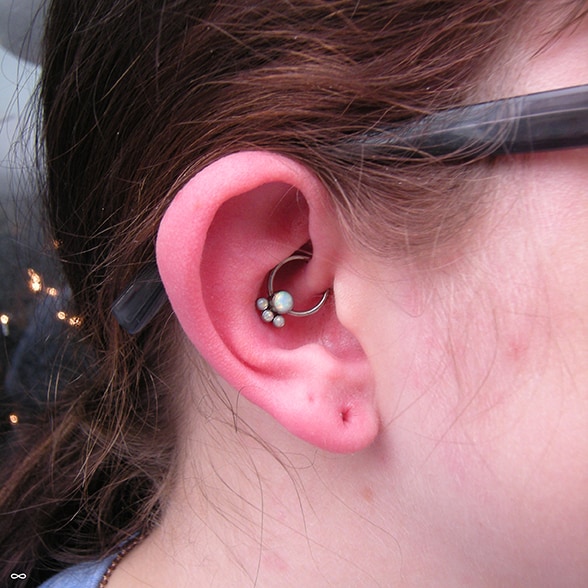
Risks
As with most piercings, the primary risk involved is infection. It doesn’t take a lot for the piercing site to become infected.
Redness, pain, tenderness, and swelling are normal reactions for the first couple of days. If these symptoms persist or re-occur at any point, you should see a medical professional immediately. At the very least, consult a piercing professional if you have any concerns.
The risk of infection can be kept to a minimum by diligently following you hygiene routine. Avoiding to touch or move the piercing is also important. Take care not to let the piercing get caught on clothing or in your hair.
If the piercing is not looked after properly, or the procedure hasn’t been carried out well, rejection is another potentially unwanted result. Rejection is what happens when the body recognizes the piercing as a foreign object and attempts to ‘push’ it out.
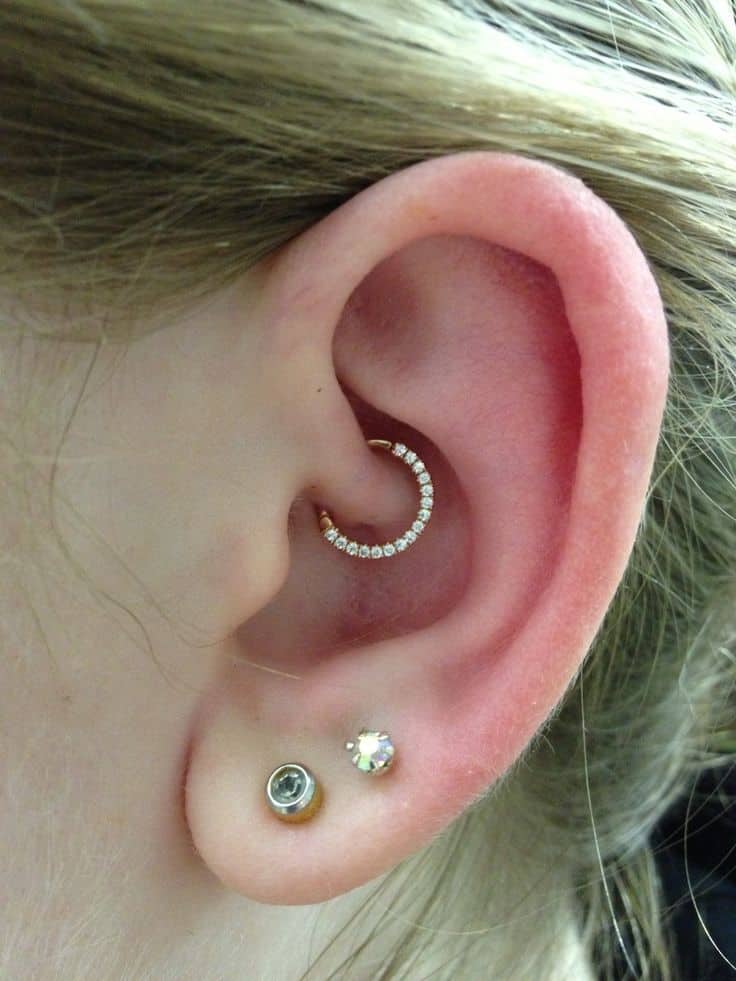
How much is a daith piercing?
The cost of getting a daith piercing is usually between $40 – $80, not including the jewelry – which can cost up to $50 or so.
Daith piercing prices vary from salon to salon and from town to town. Bigger cities generally see higher daith piercing costs than smaller towns. At the same time, though, piercing professionals in cities see more customers and are generally more experienced.
It’s important not to try to save money on any piercing procedure. Daith piercings, in particular, require a lot of experience and expertise on the part of the piercer. They need to be done exactly right in order to look good and not get rejected.
Quite apart from anything else, if done improperly by a cheaper, less experienced piercer, the daith will be more likely to become infected or rejected. This involves further costs for medical care, far higher than you would have paid for an expert’s time in the first place.
The bottom line is that it’s always better to spend more money on getting the piercing right the first time around. It could save you a lot of pain, time, and money in the long run.
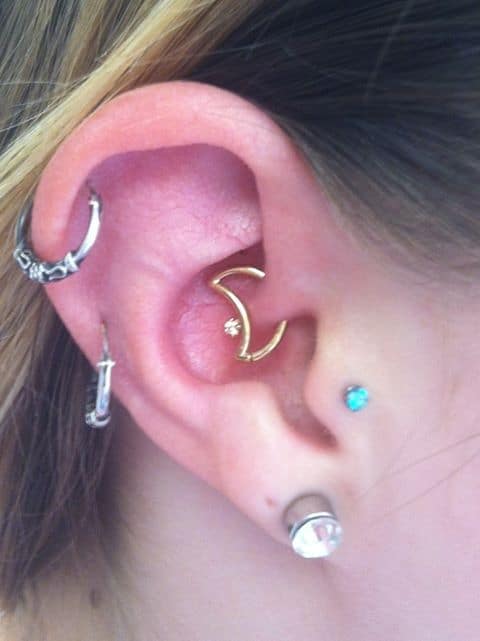
Daith piercing pain factor
Most people who have daith piercings report having felt more of a pinching or pressure sensation rather than ol’fashioned pain. Other people report it as being one of the most painful ear piercings out there. Go figure.
We all have different pain thresholds and experience various types of pain differently, so it’s understandable that there’s a broad range of responses here. As we’ve already mentioned though, the actual piercing procedure shouldn’t take more than 10 seconds – and that’s the worst of the pain over with.
The piercing site will remain sore for a week or so afterward. Naturally, the pain and tenderness will gradually go down and disappear completely, provided you take care of the piercing properly.
If you know yourself to be susceptible to pain in this area, numbing creams and freeze sprays are available. Ask your piercing professional about pain relief options prior to the appointment.
If the piercer is unable to provide pain relief, you might be able to bring your own numbing cream and use it immediately before the appointment.
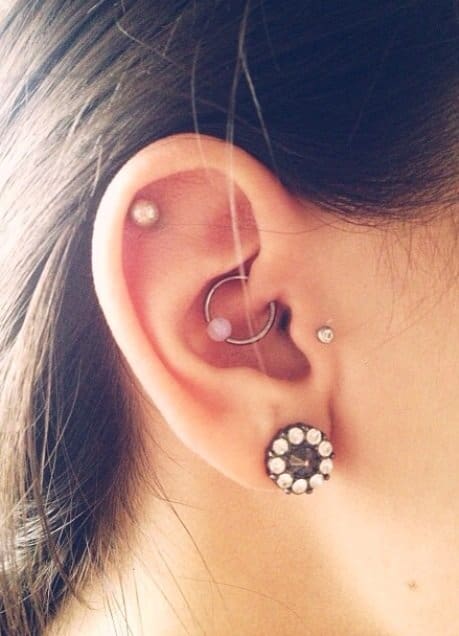
Daith piercing as migraine treatment
There is some anecdotal evidence that daith piercings can be used to help with migraines and persistent headaches. The reason for this is that the piercing is done on the exact spot of a pressure point on the ear that is used by acupuncturists to treat migraines.
There are conflicting opinions out there regarding the effectiveness of these piercings for migraines, and little clinical evidence either for or against.
If migraine treatment is the primary reason why you’re considering getting a daith piercing, there are ways to test it out before making the permanent commitment of a piercing.

Give acupuncture a go, ensuring that it’s specifically targeted at migraines. You’ll be able to see for yourself whether stimulating this alleged pressure point in the ear helps with your migraines.
Certain qualified acupuncturists are able to place sub-dermal studs at pressure points. This would be the closest you’d get to check the effects of putting pressure in this area of your ear on your migraines, without actually getting the piercing.
If either of those proves effective for your migraines, getting a daith piercing could be a good idea and provide a permanent solution.
Those claiming that these peircings are indeed useful in alleviating migraines suggest getting the piercing on the side corresponding to where you have the most pain. Migraines tend to affect one side of the head – if yours occur most often on the left, consider a daith piercing in your left ear.
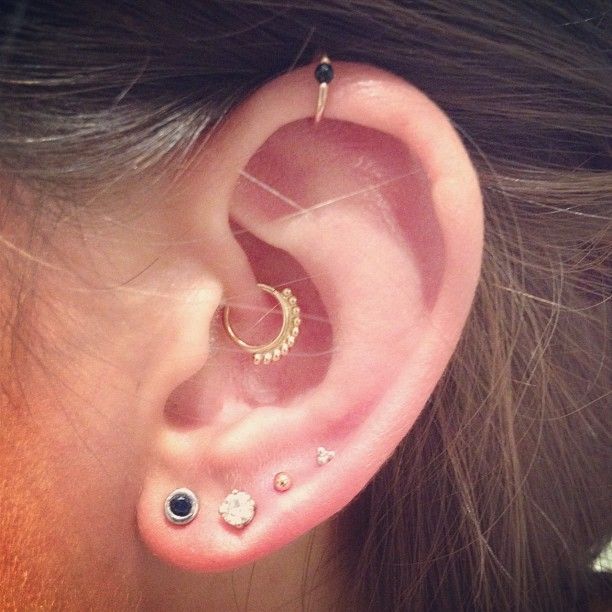
Other considerations
The decision to get a piercing should be the result of careful consideration of pros and cons. It would be a shame to spend time and money on the (potentially painful) procedure only to find a daith piercing is not for you.
The first thing to consider is whether your ears are suitable for a daith piercing. Everyone’s ears are slightly different. For some ear piercings, such as the traditional lobe piercing, it doesn’t matter. A daith piercing, however, requires a certain amount of space along a specific point.
If that particular part of your ear cartilage is too narrow, you might not be able to get a daith piercing – it would be impossible to ‘get in there’ with the needle to pierce it, and the piercing itself would be too close to the edge of the cartilage. This, in turn, would likely lead to problems with healing and increased risk of rejection.
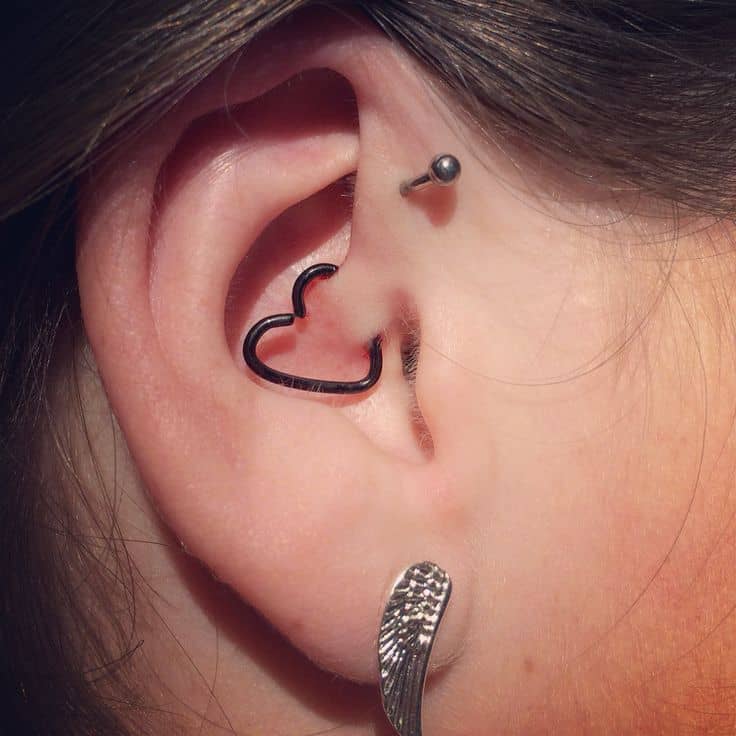
Since daith piercings take a long time to heal – even up to 12 months – they’re a pretty serious commitment. During this time, you will need to constantly look after the piercing and take care not to damage it.
Sleeping on the side where you have a daith piercing is not recommended, so that’s something to definitely take into consideration (again, up to 12 months!). During this time, you’ll also need to be careful when getting dressed and undressed, to make sure clothing doesn’t catch on the piercing and pull on it.
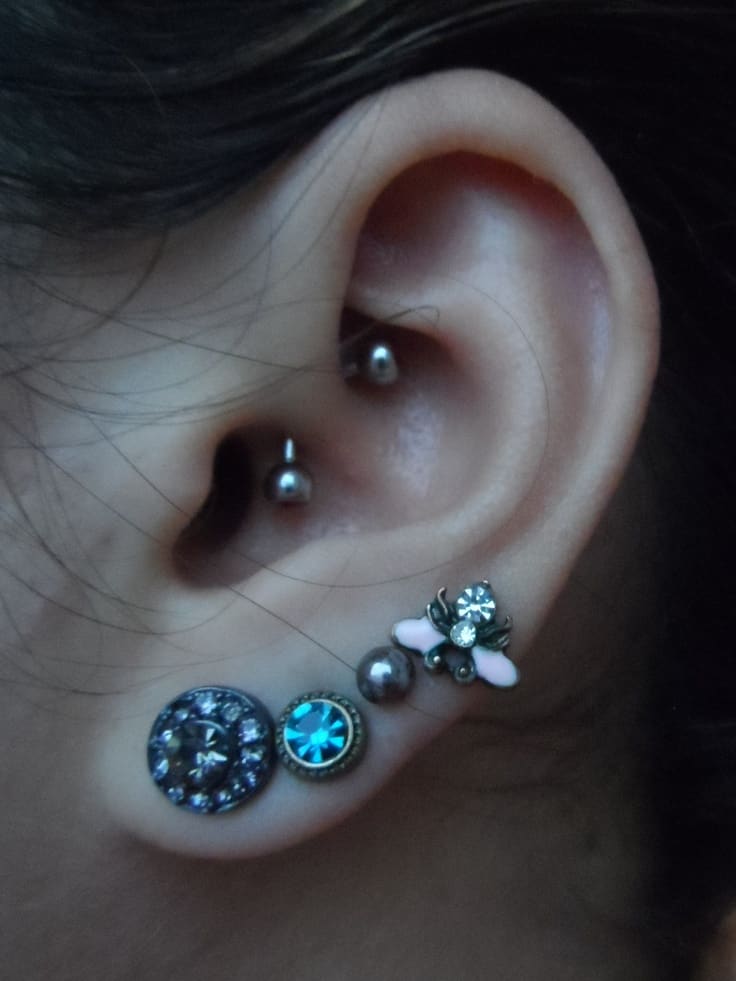
Equally, if you have long hair, care will need to be taken when brushing and styling it. Wearing hats that cut off at your ears is also not recommended.
Wearing headphones could present a problem. Likewise, if your profession involves wearing earbuds or other protective ear equipment, or using a stethoscope, a fresh daith piercing could make this difficult.
This is not to say that your daith piercing is going to be a pain in the, uh, ear, for a whole 12 months. It could heal much sooner than that, plus it’s mostly tender during the first couple of months of healing. Don’t let the care routine discourage you – if you think a daith piercing is right for you, you’ll find ways to make it work!
